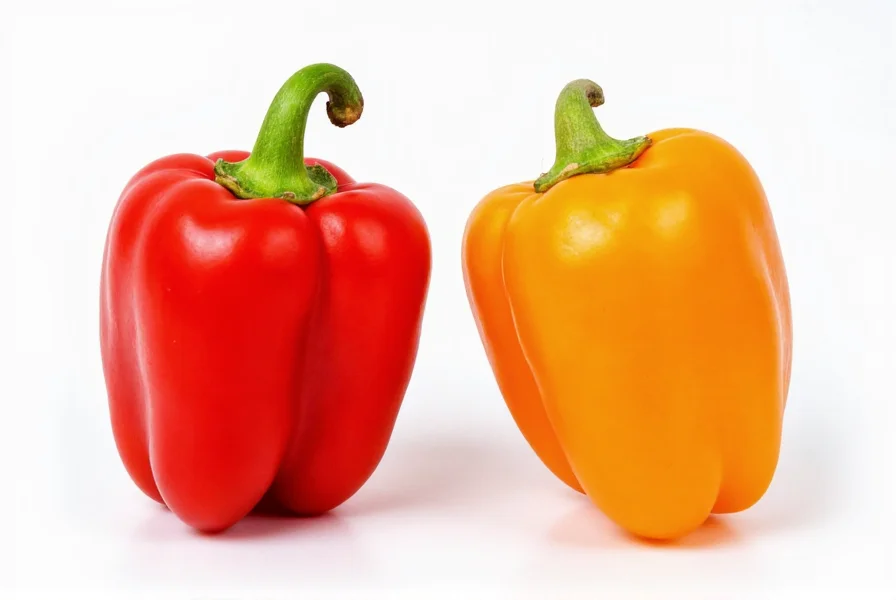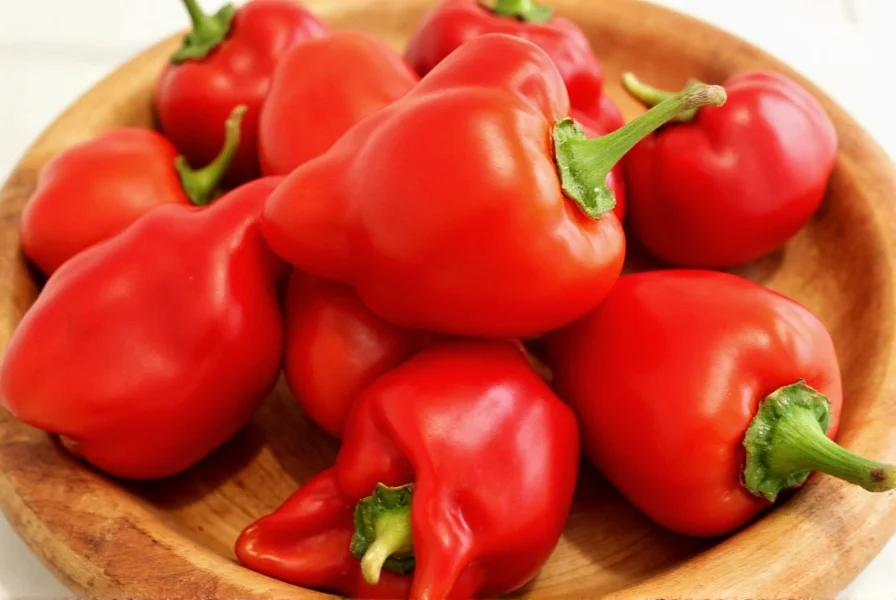Scotch bonnet peppers are prized in Caribbean and West African cuisines for their distinctive floral aroma, sweet-heat profile, and intense spiciness. When you can't find these vibrant peppers, knowing the right substitute preserves your dish's authenticity while maintaining proper heat balance. This guide details the most effective alternatives based on heat measurement, flavor chemistry, and culinary application.
Understanding Scotch Bonnet Characteristics
Before selecting a substitute, understand what makes scotch bonnets unique. These peppers typically measure 100,000-350,000 Scoville Heat Units (SHU), placing them in the same heat category as habaneros. Their flavor profile combines tropical fruit notes (apricot, citrus) with earthy undertones, making them essential in jerk seasonings, hot sauces, and stews. The thin walls allow for quick infusion of flavor into dishes, unlike thicker-walled peppers that require longer cooking times.
Top Scotch Bonnet Pepper Substitutes Ranked
Not all hot peppers make suitable replacements. The ideal substitute matches both heat intensity and flavor complexity. Here's how common alternatives compare:
| Pepper Variety | Scoville Range | Flavor Profile | Substitution Ratio | Best For |
|---|---|---|---|---|
| Habanero | 100,000-350,000 SHU | Fruity, citrusy, slightly smoky | 1:1 | All-purpose substitute |
| Jamaican Hot Pepper | 100,000-200,000 SHU | Similar to scotch bonnet, slightly milder | 1:1 | Caribbean recipes |
| Serrano | 10,000-23,000 SHU | Grassy, bright, less sweet | 2-3 peppers | Salsas, milder dishes |
| Cayenne | 30,000-50,000 SHU | Sharp, vinegary, less complex | 1.5x amount | Cooking, sauces |
| Thai Bird's Eye | 50,000-100,000 SHU | Floral, citrusy, intense heat | 1.5 peppers | Asian-Caribbean fusion |
Habanero: The Closest Flavor Match
Habaneros stand as the premier scotch bonnet pepper substitute for Caribbean recipes due to nearly identical heat levels and overlapping flavor compounds. Both contain high concentrations of capsaicinoids that create that distinctive slow-building heat. When substituting, use equal amounts, but taste as you go—habaneros sometimes run hotter at the stem end. For authentic jerk seasoning, add a pinch of apricot jam to mimic scotch bonnet's natural sweetness.

Milder Alternatives for Sensitive Palates
When cooking for those who prefer less heat, serrano peppers provide the most balanced scotch bonnet substitute for mild recipes. Their grassy notes work well in salsas and marinades, though they lack the tropical fruitiness. Use two to three serranos for each scotch bonnet called for, removing seeds and membranes to further reduce heat. For Jamaican patties or rice and peas, add a few drops of mango puree to approximate the scotch bonnet's sweet undertones.
Finding Authentic Substitutes for Regional Dishes
The best scotch bonnet pepper substitute varies by cuisine. For authentic Jamaican jerk chicken, seek out Jamaican hot peppers (also called 'bonney peppers') at Caribbean markets—they're virtually identical. In West African soups like Nigerian pepper soup, use a combination of cayenne and bell pepper to replicate both heat and sweetness. When making Trinidadian hot sauce, add a touch of passion fruit juice to habanero-based sauces to enhance the fruity notes.
Adjusting Recipes When Substituting Peppers
Successful substitution requires more than simple quantity replacement. Consider these adjustments:
- For dried substitutes: Use 1 teaspoon crushed dried pepper for each fresh scotch bonnet
- When using milder peppers: Add 1/8 teaspoon cayenne per pepper to boost heat gradually
- For frozen alternatives: Thaw completely before use to maintain texture integrity
- In slow-cooked dishes: Add milder substitutes later in cooking to preserve flavor
Always wear gloves when handling hot peppers, and avoid touching your face. If you accidentally get capsaicin on your skin, use milk or oil to neutralize the burn rather than water, which spreads the oil-based compound.
Where to Source Real Scotch Bonnets
Before settling for substitutes, check these sources for authentic scotch bonnets:
- Caribbean and African grocery stores (often labeled as 'Caribbean hot peppers')
- Farmers markets in warmer climates (peak season: summer through early fall)
- Online specialty retailers (frozen or dried options available year-round)
- Growing your own (matures in 90-100 days; requires warm climate or greenhouse)

Testing Your Substitute
Before committing to a full recipe, test your scotch bonnet pepper substitute with this method: Mince a small piece and mix with 2 tablespoons of neutral oil. Let steep for 10 minutes, then taste a tiny amount on the tip of your tongue. This reveals the pepper's true heat profile without overwhelming your palate. Adjust quantities based on this test before incorporating into your dish.
Frequently Asked Questions
Can I use regular chili powder instead of fresh scotch bonnet?
Yes, but with adjustments. Use 1 teaspoon good quality chili powder (like cayenne-based blends) per scotch bonnet pepper, plus 1/4 teaspoon paprika for color and 1/8 teaspoon apricot jam for sweetness. Fresh peppers provide brighter flavor, so add this mixture toward the end of cooking.
Why does my habanero substitute taste different than scotch bonnet?
While habaneros and scotch bonnets share similar heat levels, scotch bonnets contain unique ester compounds that create more pronounced tropical fruit notes. To bridge this gap, add 1-2 drops of fruit vinegar (mango or passion fruit) per pepper when substituting. The difference is most noticeable in uncooked applications like fresh salsas.
How do I safely handle extremely hot pepper substitutes?
Always wear nitrile gloves when handling hot peppers, even when using substitutes like habaneros. Work in a well-ventilated area to avoid inhaling capsaicin fumes. Never use latex gloves as capsaicin can penetrate them. After handling, clean surfaces with soapy water—alcohol-based cleaners can spread the oil. If you get pepper juice in your eyes, flush with whole milk, not water.
Can I freeze scotch bonnet substitutes for later use?
Yes, most substitutes freeze well. Place whole peppers in a single layer on a baking sheet, freeze until solid (about 2 hours), then transfer to airtight containers. Frozen habaneros maintain quality for 6-8 months. Thaw completely before use for best texture. Note that frozen peppers release more liquid, so pat dry before adding to dishes requiring crisp texture.











 浙公网安备
33010002000092号
浙公网安备
33010002000092号 浙B2-20120091-4
浙B2-20120091-4